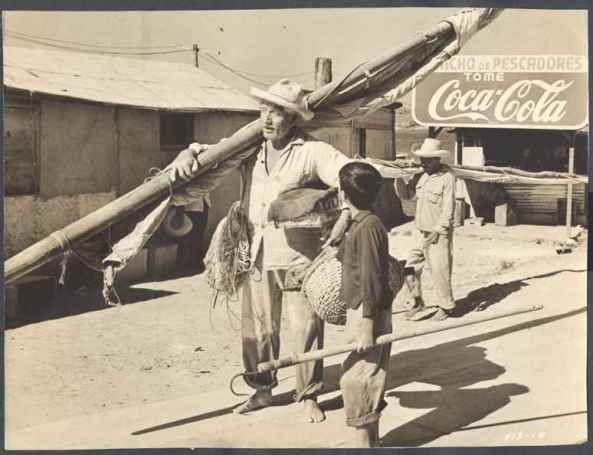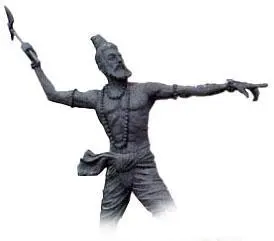Time is an entity writers, thinkers and scientists have struggled with ever since… well, the beginning of time! (Sorry for the bad pun.) Well, not exactly, but the nature of time has been an indispensable part of creative literature ever since stories began to be told. In Indian mythology, time is cyclic, with past, present and future recurring ad infinitum whereas in the Occident “time’s arrow” – its apparently unidimensional movement in the forward direction – is an absolute concept with an “end of days” fast approaching. As science progressed, time’s apparent rigidity was first destroyed by Einstein by the theory of relativity: with the arrival of quantum theory, it became a very fluid concept. (According to Stephen Hawking, time is spherical, but wrap my head around that concept I need to go back and read his book once again.)
In the present collection of four plays by J. B. Priestly (<i>Time and the Conways and Other Plays), time takes centre stage in three: in three different ways. The title play, Time and the Conways, uses the possibilities of the stage to mishmash time: in the second one (I Have Been Here Before), the possibilities of static or cyclic time are explored in a narrative which borders on fantasy. In the last play, The Linden Tree, the effect of the passage of time on human beings and families is explored in a conventional manner, making it the most “ordinary” of the lot. An Inspector Calls, the most powerful play among the lot (in my opinion) does not play with time but with possibilities.
Time and the Conways

Courtesy: World Stage Design
The Conways are prosperous family comprising the charming but shallow Mrs. Conway, her sons happy-go-lucky son Robin and quiet and perceptive Alan; daughters Hazel (pretty and rather silly), Madge (serious and political), Kay (creative and sensitive) and Carol(an exhilarating free spirit). We meet them at Kay’s twenty-first birthday party as the family are playing a game of dumb charades. It is 1919 and the first world-war is ending: Robin, who has been away in the army is due to arrive. There is also Joan Helford who is in love with Robin, Gerald Thornton who is a young man who is a friend of the the family and Ernest Beevers, Gerald’s friend, who is enamoured of Hazel who can’t stand his sight.
This could be any drawing room comedy of the fifties: pleasant and mediocre. But Priestly expertly wrong-foots us by breaking the scene in-between and taking nineteen years forward in time in the second act. It’s once again Kay’s birthday party, this time the fortieth, but the occasion is far from pleasant: the Conways have lost their wealth, relationships have formed and broken down, and most of the family (except Alan) have become disillusioned and embittered. The euphoria of the roaring twenties have given way to the despondency of the forties, and a second war is looming on the horizon.
This itself would have provided a stunningly good play: but the playwright tricks us yet again! In the third act, we go back to where we have left off in the first act – but now, each and every line becomes loaded as we see the shambles of the second act being foreshadowed: and we realise how little events leave long shadows on the path of time. But according to Alan, the trouble is due to how we view ourselves.
Alan: …You know, I believe half our trouble now is because we think that Time’s ticking our lives away. That’s why we snatch and grab and hurt each other.
Kay: As if we were all in a panic on a sinking ship.
Alan: Yes, like that.
Kay: [smiling at him] But you don’t do these things – bless you!
Alan: I think it’s easier not to – if you take a long view.
Kay: As if we’re – immortal beings?
Alan: Yes, and in for a tremendous adventure.
I Have Been Here Before

Courtesy: Theatremania
Literally, this is the feeling of deja vu: where you know that you have never been in a place or situation before, but still it all seems all too familiar. Reincarnation and cyclic time all have been used as explanations for this phenomenon which modern science sees as an anomaly of memory. In the hands of a gifted writer, it makes for the premise of an intriguing play.
The concept of seemingly insignificant events of the present which can have lasting impact on one’s life examined in the previous play is used here too, but with the question asked: if we knew what could happen, can we change it? Or in another sense, can we go back and change the past?
Doctor Gortler, a displaced German scientist, arrives at the Double Bull Inn run by Sam Shipley and his widowed daughter Sally Pratt in Grindle Moor, North Yorkshire. Apparently, he seems to know that the industrialist Ormund and his wife Janet are due to arrive there – and also about the drama to be played out between them and Oliver Farrant, a schoolmaster teaching at one of the Ormund schools. As the events play out in their inevitability, Dr. Gottler acts as a sort of deus ex machina to resolve them.
If one leaves aside the fantasy/ science fiction premise, this play is rather insipid to read. But one can easily appreciate the power it would have had on stage when it was staged in 1937.
Dr. Gortler: You say that you have been happy here?
Sam: Yes, I can’t grumble at all. I have never made much out o’ this place, but I’ve had all I want. I’d ask for naught better – If I had my time over again.
Dr. Gortler: [interested] Do you often say that?
Sam: Say what?
Dr. Gortler: [slowly] If you had your time over again.
An Inspector Calls
This play uses the advantages (and limitations) of the proscenium stage to the maximum extent possible: to produce a play which is a very good mystery (in the Agatha Christie tradition), a social statement (very much like Ibsen) and a final twist which takes it into the realm of fantasy. I read the play, then watched the BBC adaptation… you have to see it performed to appreciate the power packed into ninety minutes of stage-time.

Courtesy: Little Baddow Drama Club
Warning: the following passage is a spoiler. Read only if you are familiar with the play.
The Birlings (the industrialist Arthur Birling, his wife Sybil, daughter Sheila and son Eric) are having a quiet little dinner at their home to celebrate Sheila’s engagement to Gerald Croft, son of Sir George and Lady Croft. Gerald is also present. For Arthur Birling, the occasion is doubly joyful, as Birling and Company are the less powerful competitors of Crofts Limited, and the marriage will mean a profitable business deal as well as a social coup d’état. It is the pre-World War I era, and Birling is acutely consciousness of his social backwardness-something he is trying hard to rectify through his financial and political clout. He has been rather successful as he hints to Gerald, because a knighthood is on the way.
Into this haven of bourgeois comfort and security walks in Inspector Goole, unannounced, and goes about destroying it piece by piece. He is apparently there to conduct an enquiry into the suicide of a girl, Eva Smith, who has been admitted into the infirmary after drinking disinfectant. According to the inspector, the Birlings have a hand in the girl’s death. Initially Birling is haughty and superior; being still “on the bench” and a friend of Chief Constable Colonel Roberts, he can afford to be short with a mere inspector. Goole, however, goes about his business ruthlessly and ultimately succeeds in grinding them down, one by one.
It comes out that the girl has been mistreated by all of them. Birling initially fired her from his factory for organising a strike; Sheila got her dismissed from her subsequent job at a dress shop out of pure jealousy and Gerald “kept” her for a year at a friend’s flat, after picking her up from a bar which she was frequenting in her desperation. This last revelation leads to Sheila breaking off her engagement, and Gerald goes out to be alone for a while. But the Birling’s evening of woe is far from over.
Inspector Goole establishes that a couple of weeks before, Eva Smith had approached Mrs. Birling in her capacity of the chairman of a charitable society. She was pregnant and in desperate need of assistance. Initially she had lied that she was a married woman and that her name was Birling (!); however, the truth soon came out that the baby was out of wedlock. Eva did not want to approach her lover because he was an immature boy who is an alcoholic and had stolen money to support her. Mrs. Birling, however, was adamant that the baby’s father must be made solely responsible, and succeeded to influence the society to turn her out without a penny.
However much the inspector bullies her, Mrs. Birling is adamant – now that the woman has committed suicide, her lover must be dealt with very severely. Then Goole drops his final bomb: the culprit is none other than Eric, her son, an accusation which the young man accepts. He also admits stealing money from his father’s firm.
The family is in a total shambles now: a son who has committed adultery and theft, a daughter whose engagement has ended the same day it started and a father in the hope of a knighthood, faced with public scandal and disgrace. Eric is almost ready to murder his mother, because as he says, she is “responsible for the death of her own grandchild”. It is at this point that the inspector begins to behave very peculiarly. After rubbing in the fact that they all have got blood on their hands, he makes this speech and leaves.
One Eva Smith has gone… but there are millions and millions of Eva Smiths and John Smiths still left with us, with their lives, their hopes and fears, their suffering and chance of happiness, all intertwined with our lives, with what we think and say and do. We don’t live alone. We are members of one body. We are responsible for each other. And I tell you that the time will soon come when if men do not learn that lesson, then they will be taught it in fire and blood and anguish. We don’t live alone. Good night.
It is into the situation that Gerald comes back, and he comes with some welcome information – he has just confirmed that there is no Inspector Goole in the police department! With cold logic, he establishes that they have no reason to believe that the girl in each of the incidents mentioned by Goole is the same one – true, he produced a photograph, but it was shown to each of them individually. The hoax is confirmed when they call the infirmary and confirm that there has been no suicide that night.
It is time for a pat on the back for Gerald, a sigh of relief from Mrs. And Mr. Birling, and a jolly round of drinks. Sheila and Eric, though initially reluctant to return to “normalcy” are on the way to being persuaded when the phone rings.
It is from the infirmary. A girl has just died on the way there after drinking disinfectant, and a policeman is on the way to question them… and the curtain descends. (hide spoiler)]
The depth of the play is truly amazing. Only when we encounter the conversation again can we understand its depth, and how cleverly it is constructed. The story takes off smoothly from a drawing room farce to a darkly philosophical tragicomedy, which is sure to draw the viewers into the middle of it without them noticing: and to leave them drained at the end.
The Linden Tree

Courtesy: Vanemuine
This is the most straightforward play among the lot, describing a situation similar to the one in Time and the Conways, but with a much nicer family, and relatively a more pleasant resolution.
Professor Robert Linden is a history professor at the university in the provincial town of Burmanley. The new vice-chancellor wants to retire him – the play opens on the day of his sixty-fifth birthday, the official retirement age – and the professor’s wife also agrees: she wants out! Linden’s wheeler-dealer son Rex has managed to buy a county estate, and she wants to move there to spend their declining years in peace. His daughters, the serious Dr. Jean and the social climber Marion (married to a French aristocrat), agree – only his youngest daughter, Dinah, is with the Professor who plans to fight tooth and nail to stick on.
Dr. Jean here is a rehash of Madge in the first play, and Dinah is Carol. Marion is a more aggressive Hazel and we can find shades of Robin in Rex. For this reason, reading the plays in succession, it felt repetitive to me – maybe it’s different on stage, however.
Again, time makes its entrance here in the form of history, on which Professor Linden has his own refreshingly different views.
‘History, to be worthy of the name, should bring us a stereoscopic view of man’s life. Without that extra dimension, strangely poignant as well as vivid, it is flat and because it is flat, it is false. There are two patterns, endlessly being superimposed on one another. The first pattern is that of man reproducing himself, finding food and shelter, tilling the land, building cities, crossing the seas. It is the picture we understand now with ease, perhaps too easily. For the other pattern is still there, waiting to be interpreted. It is the record of man as a spiritual creature, with a whole world of unknown continents and strange seas, gardens of Paradise and cities lit with hell-fire, within the depths of his own soul. History that ignores the god and the altar is as false as history that could forget the sword and the wheel…’
Thankfully, we have the artists and writers to record the second pattern.













 I located a book (പരശുരാമൻ: ഒരു പഠനം – “Parasurama: A Study”) on Parasurama at the Kerala Sahitya Akademi bookstore this December. It was a serendipitous find! I never knew such an in-depth study existed.
I located a book (പരശുരാമൻ: ഒരു പഠനം – “Parasurama: A Study”) on Parasurama at the Kerala Sahitya Akademi bookstore this December. It was a serendipitous find! I never knew such an in-depth study existed.
 Another interesting piece of information is Renuka’s identification with Yellamma, a goddess of Karnataka who is now known as a patron of Devadasis, the traditional temple courtesan’s of India. But it seems that Yellamma was originally a goddess for women who wanted freedom from their abusive husbands, and also for those who wanted to live their lives as they liked, without being tied to domesticity. Another example of patriarchal subversion?)
Another interesting piece of information is Renuka’s identification with Yellamma, a goddess of Karnataka who is now known as a patron of Devadasis, the traditional temple courtesan’s of India. But it seems that Yellamma was originally a goddess for women who wanted freedom from their abusive husbands, and also for those who wanted to live their lives as they liked, without being tied to domesticity. Another example of patriarchal subversion?)